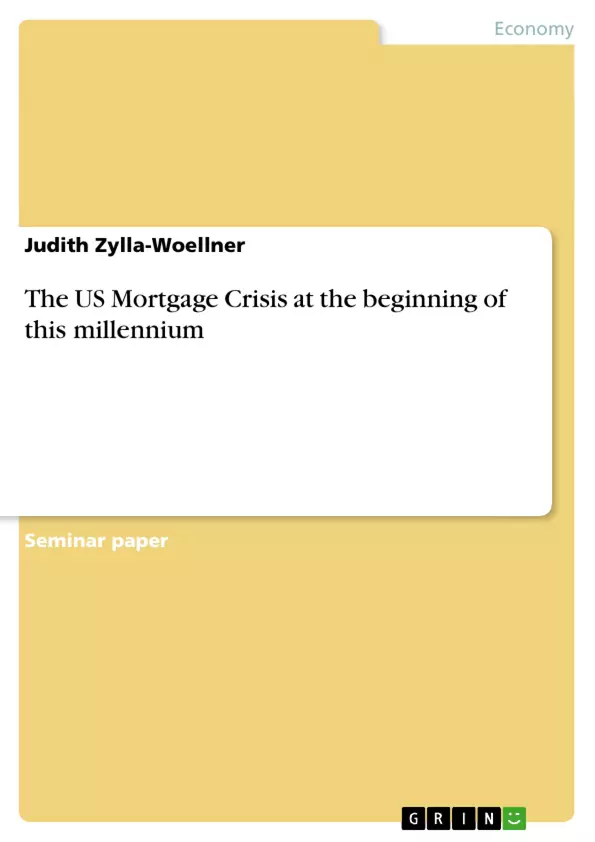The United States mortgage crisis was one of the primary indicators of the financial crisis at the beginning of this millennium, characterized by an increase in subprime mortgage account receivables and foreclosures, and follow-on by a decline of securities.
Due to this crisis many investment banks went bankrupt for instance Lehmann Brothers. The proportion of lower-quality subprime mortgages originated rose from the originally 8% to approximately 20% from 2004-2006, with much higher ratios in some parts of the United States.
These subprime mortgages were well-liked in the United States and were one of the only options for many immigrants to own their dream house in the United States.
A high percentage of the mortgages, over 90% in 2006, were adjustable-rate mortgages. This was part of a broader trend of lowered lending standards and higher-risk mortgage products.
Inhaltsverzeichnis (Table of Contents)
- I. INTRODUCTION
- II. CAUSES OF MORTGAGE CRISIS
- III. WHAT CAN BE DONE
- IV. REFERENCES.
Zielsetzung und Themenschwerpunkte (Objectives and Key Themes)
This working paper aims to provide an analysis of the US mortgage crisis of the early 2000s, its causes, and potential solutions. The paper examines the impact of subprime mortgages, the role of financial institutions, and the broader economic consequences of the crisis. Key themes explored include:- The rise and fall of the US housing bubble
- The role of subprime mortgages in the crisis
- The impact of the crisis on financial institutions
- The global implications of the mortgage crisis
- The potential for future financial instability
Zusammenfassung der Kapitel (Chapter Summaries)
I. INTRODUCTION
This chapter introduces the US mortgage crisis, highlighting its significance as a major indicator of the global financial crisis. It discusses the surge in subprime mortgage lending, the subsequent rise in foreclosures, and the decline in the value of mortgage-backed securities. The chapter also mentions the bankruptcy of investment banks like Lehman Brothers.II. CAUSES OF MORTGAGE CRISIS
This chapter delves into the causes of the mortgage crisis, focusing on the explosion of the US housing bubble in 2005. It explores the concept of subprime mortgage loans, their repayment structure, and the factors that encouraged borrowers to take on these risky mortgages. The chapter also discusses the role of financial institutions, government policies, and global economic factors in contributing to the crisis.Schlüsselwörter (Keywords)
The US mortgage crisis, subprime mortgages, housing bubble, financial crisis, investment banks, global financial institutions, government regulation, economic instability.- Quote paper
- Judith Zylla-Woellner (Author), 2012, The US Mortgage Crisis at the beginning of this millennium, Munich, GRIN Verlag, https://www.grin.com/document/207984



